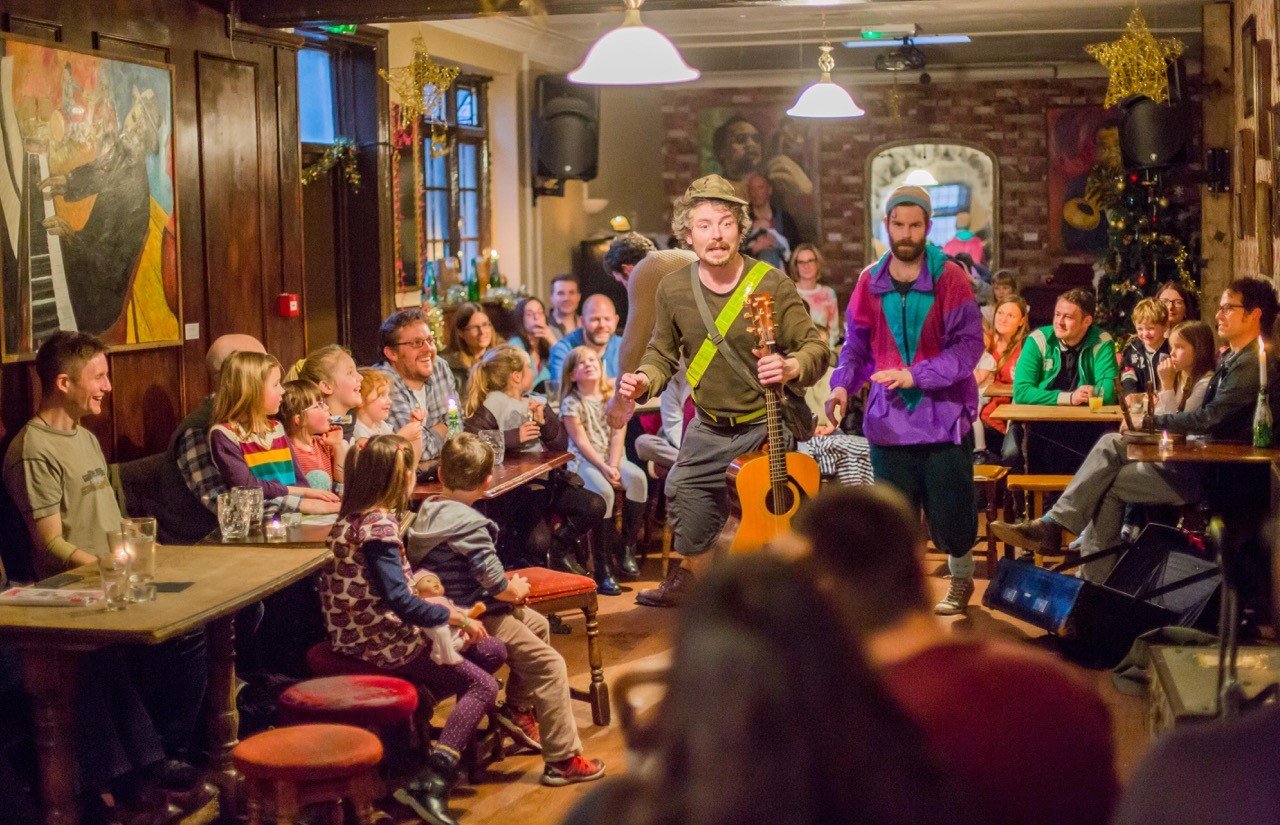
Fine Chisel in 'Neither There Nor Here'
Photo: Paul Blakemore
Rebalancing funding for rural arts
It’s not enough for urban arts companies to tour to rural areas – we need to support more rurally based organisations, argues Ralph Lister.
I have long believed in the need to document and record rural touring activity to give it more visibility, credibility and profile. So, in 2003 I was delighted with the report Only Connect, which surveyed rural touring audiences nationally, finding that 30% of rural audiences only accessed the arts through a rural touring experience in their local village hall.
While many urban-based organisations work in rural areas, the arts ecology is healthier when arts organisations are located within their host areas
Further research ten years later looked at audiences of three countywide rural touring schemes in Nottinghamshire, Leicestershire and Lincolnshire. Using Insight profiling, it concluded that 74% of audiences were from areas with ‘some arts engagement’ and 16% were from areas with ‘low arts engagement’.
In addition, 75% of audiences wanted to support and see events locally but 42% of audiences had either not seen any at all or had only seen shows once or twice in other places in the previous 12 months. Overall, 44% of all audiences had either not travelled at all to a town or city to see a live performance in the preceding 12 months or had only done so once or twice.
Evidence and data review
On behalf of the National Rural Touring Forum (NRTF), I advised on the first Arts Council England (ACE) Rural evidence and data review in 2015.
In the ‘smaller area’ classification (DEFRA’s methodology) 30 – or 4.6% – of ACE’s national portfolio organisations (NPOs) are based in rural areas, representing 2.5% of overall NPO financial investment between 2015 and 2018. This is very low in comparison with the rural population as a whole, which is 17.6% in this classification. (Aldeburgh Music in Suffolk is included in these figures and receives around £4.2 million of the £25 million invested in rural NPOs.)
While many urban-based organisations work in rural areas, the arts ecology is healthier when arts organisations are located within their host areas, along with levels of direct investment in those areas. We would welcome positive action by ACE to strengthen the local arts infrastructure in rural areas by investing more funds into proven organisations, by increasing levels of funding going to existing NPOs and funding organisations that are not currently NPOs.
18% of NPOs are located in the ‘higher area’ rural classification and receive 10.2% of total NPO financial investment, while the rural population represents 23.4% of the whole. (As with Aldeburgh Music, the RSC sits in this group and receives around £45 million out of the total investment of £100 million.)
Focus on the regions
The balance of NPO investment in rural and urban areas has not altered significantly between the current portfolio 2015-18 and the previous round 2012-15. In the light of the debate around ACE funding inside and outside London, it feels like there was a missed opportunity for ACE to address a wider funding imbalance between urban and rural areas through its NPO portfolio decisions.
Exhorting national organisations based in the capital to extend their reach into the regions (and by association into rural areas) does not necessarily seem like a better option than funding proven rural-based arts organisations to build their capacity and extend their reach in their localities.
In the review’s overall conclusions, the authors wrote: “Historical legacies of arts and cultural funding being concentrated in major urban conurbations such as London also has an impact on the distribution of funding.” In its conclusion to its inquiry into ACE, the House of Commons Culture, Media and Sport select committee wrote: “The Arts Council is well placed to tackle the clear imbalance of funding that favours London unfairly. It must do so with greater urgency if it is to realise its declared ambition to engineer the provision of great arts culture for everyone.”
With the most recent NPO decisions for the period 2018 to 2022, much was made of a funding shift from London to the regions. According to the Rural Narrative paper, 18% of the total had been based in a local authority area defined as rural and these organisations would receive £44.6 million in 2017/18. But 18% is the same figure as it was in the previous round 2015 to 2018, relating to the higher-level classification. So, there’s been no shift of funding to those rurally based organisations at all.
ACE plans to update the Rural Evidence and Data Review this year and it will inform its pending consultation process, which will result in the ten-year strategy 2020 to 2030. Last year it commissioned NRTF to undertake a significant three-year research project into the individual and community benefits of rural touring.
There have been exchanges with ACE about urban-based organisations doing good work in rural areas to which our response is that organisations, such as Aldeburgh Music, hoover up large chunks of the quoted rural investment. These exchanges ultimately do not address the unequivocal need for rural-based arts organisations to serve and work alongside their rural communities.
Ralph Lister is Chief Executive of Take Art and Development Director of the National Rural Touring Forum.
www.takeart.org
www.ruraltouring.org
Join the Discussion
You must be logged in to post a comment.